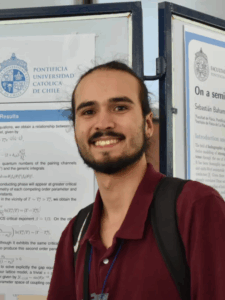
Juan Pablo Esparza
Departamento de Física, Universidad Técnica Federico Santa María
Band-flattening phenomena in non-Hermitian systems
When: 12:00-13:00 CET, June 26th (Thursday), 2025
Where: Sala de Seminarios (182), ICMM-CSIC, Campus de Cantoblanco, Madrid
Flat bands—dispersionless electronic or photonic states—provide unique platforms to study strongly correlated phases and unconventional topology. While their usual realizations rely primarily on Hermitian systems, incorporating non-Hermitian effects introduces fundamentally new routes for flat-band engineering. Here, I will introduce a general method to promote any Dirac-like Hamiltonian to non-Hermitian, preserving its fundamental properties, and provide an explicit application to twisted bilayer graphene, where we discover a new type of magic angle that arises due to the interplay between twisting and non-Hermiticity: the exceptional magic angles. Then, I will discuss how we can apply a similar method to construct perfectly flat bands in non-Hermitian crystalline systems within the framework of bipartite crystalline lattices. Our results suggest the robustness of the flat bands in open quantum systems, paving the way for the further studies on the interplay of dissipative effects, electronic topology, and interactions in non-Hermitian systems.